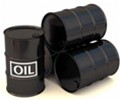
[ad_1]

India said Oct. 20 that surging oil prices could potentially create hurdles for a post-pandemic economic recovery, and urged the world’s leading producers to take steps to potentially rectify the current supply and demand imbalances.
Speaking at the India Energy Forum by CERAWeek, Indian Petroleum Minister Hardeep Singh Puri said the steep rise in prices was a wake-up call that investments need to flow into the oil and gas sector consistently.
“I am sure our friends in OPEC+ will take into account the sentiment voiced in forums like these. We are trying to ensure economic activity, but if high prices undermine that economic activity then economic activity will slow down and demand for oil and gas will also go down,” Puri told the India Energy Forum.
Saudi Arabian Energy Minister Prince Abdulaziz bin Salman told the forum that OPEC and its allies do not see any crude oil shortages in the market, dismissing calls from consuming countries to increase supplies to tame rising prices.
Dated Brent prices have more than doubled in the last year, with S&P Global Platts assessing the benchmark at $85.03/b on Oct. 19.
OPEC+ members are currently adhering to an agreement to increase crude production by 400,000 b/d every month, but key customers, including India, the US and Japan, have complained that the alliance is still holding back too much supply.
“The energy markets today are characterized by imbalances. We need to accept that the world needs reliable supply of oil and gas until we can build new energy infrastructure,” Puri said.
India’s 2021 oil demand is forecast to grow 295,000 b/d to 4.9 million b/d, which would still be well below 2019 levels. The country is expected to reach a prepandemic level of oil demand in 2022, according to S&P Global Platts Analytics.
Adding to the pain
Puri said India’s crude import bill, which accounts for about 20% of the country’s overall import bill, had risen to $24 billion in the quarter ended June from $8.8 billion in the same quarter a year earlier.
“Those facts speak for themselves. Due to this extreme volatility, prices of fuels, such as petrol and diesel, have rallied to some of the highest levels in the country,” he added.
Domestic gasoline consumption had sharply bounced back to a level higher than even prepandemic levels while diesel was also witnessing robust growth, Puri said.
“If prices do not remain predictable, stable and affordable, the economic recovery could prove to be fragile.”
Platts Analytics expects India’s overall oil demand to pick up after the monsoon season, with the upcoming festive season and an improving economy supporting consumption and pushing up fourth-quarter demand growth by 575,000 b/d quarter on quarter to 5.3 million b/d.
He said one of the priorities of the government would be to find ways to boost domestic production of oil and gas. “We are taking action to increase the area under exploration.”
Energy transition focus
India’s per-capita energy consumption was about one-third the global average, creating the need to invest in building a wide variety of fuels to meet the anticipated growth in consumption, Puri said.
“India is focused on moving towards cleaner energy and developing a gas-based economy, while also achieving the 450 GW renewable energy target by 2030. There will be great dependence on domestic resources, such as biofuels, and moving into energy products, such as green hydrogen,” Puri said.
New Delhi in June brought forward its target to achieve 20% ethanol blending with gasoline to 2025 from the previous target year of 2030.
India’s policy move to achieve a more-than-three-fold growth in ethanol blending rate in gasoline in less than five years looks to be a step in the right direction, but to many market experts and industry leaders, it sounds like an over-ambitious journey.
“Biofuels will provide opportunities which would be a win-win situation for all our partners. We are reasonably confident of achieving the target,” Puri said.
In addition, the government would be stepping up efforts to move toward Prime Minister Narendra Modi’s vision to become a gas-based economy, under which the country would aim to raise the share of gas in the overall energy mix to 15% by 2030 from the current level of 6%.
An estimated investment of $60 billion had been lined up in developing gas infrastructure, which include pipelines, city gas distribution and LNG regasification terminals, Puri said.
“Accelerating the gas initiative would also mean initiatives to boost our city gas distribution network in order to expand the use of cooking fuels, as well as initiatives such as LNG trucking,” he added.
Source: Platts
[ad_2]
This article has been posted as is from Source